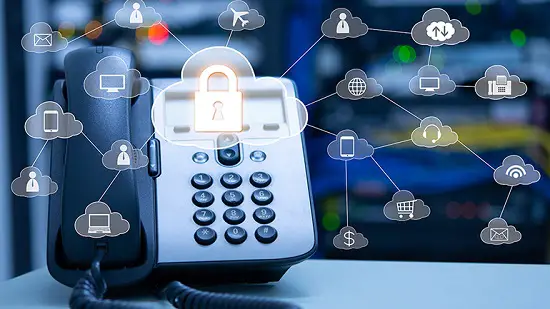| When Alexander Graham Bell developed the telephone in the 1870s, it was fairly simple to use. |
| You talked into the mouthpiece and then held it to your ear to listen. |
| For a century or so, using the telephone meant either contacting the operator to dial a number, or dialing yourself. |
| After that, all you had to do was talk or listen. |
| Nowadays, the telephone has become a very complex instrument; |
| it rivals the computer as to the number of possible uses. |
| Answering machines have been around for several decades, but they are now being replaced by voicemail. |
| Voicemail does away with the need for an answering machine. |
| Messages are stored on the system. |
| That means it’s possible to forward the message to someone else’s phone, |
| or transfer the call to a more convenient phone of your own. |
| You can also use “call pickup” |
| so that anyone in your group can answer another’s phone. |
| Conference calls have become very common. |
| This is when one person phones first one person, then another, |
| and keeps adding people to the telephone conversation. |
| This can regularly be done with up to six people. |
| It is very useful for business discussions where different people need to talk about the same thing. |
| It also speeds up the process of consensus, and allows everybody to be in on the decision or discussion. |
| The modern phone has many more features. |
| If you don’t want the caller to know what is being said in your office, you can push the “mute” button. |
| If you want to hang up without putting the receiver down, press “goodbye”. |
| If you don’t want to receive calls, just forward them all into your voicemail. |
| Newer phones will indicate when you have voicemail messages. |
| If you have trouble with these features, an automatic voice will tell you your options. |
| This help-system is built into the telephone. |
| For example, the help-voice will tell you how to set up a distribution list, |
| so that you can send the same voice message to a number of people. |
| It will also tell you how to send a message directly onto someone’s voicemail. |
| You can designate your message to go to the top of the recipient’s voicemail list. |
| You can also program it so that the recipient cannot forward it. |
| Some systems have limits on how much space can be used for individual voicemail. |
| There are a number of courtesies that voicemail users should follow. |
| Your greeting on your voicemail should be simple. |
| If you are unable to take calls for any reason, |
| you might want to explain that in your recorded greeting. |
| If you are on vacation, you might want to include that information in your greeting. |
| Don’t use voicemail as a way to avoid answering the telephone. |
| Some people use voicemail to screen calls; |
| this can be annoying to someone who can never contact you directly. |
| Check your messages regularly and reply to them promptly. |
| Enjoy the telecommunications revolution! |
Subscribe
0 Comments
Oldest





